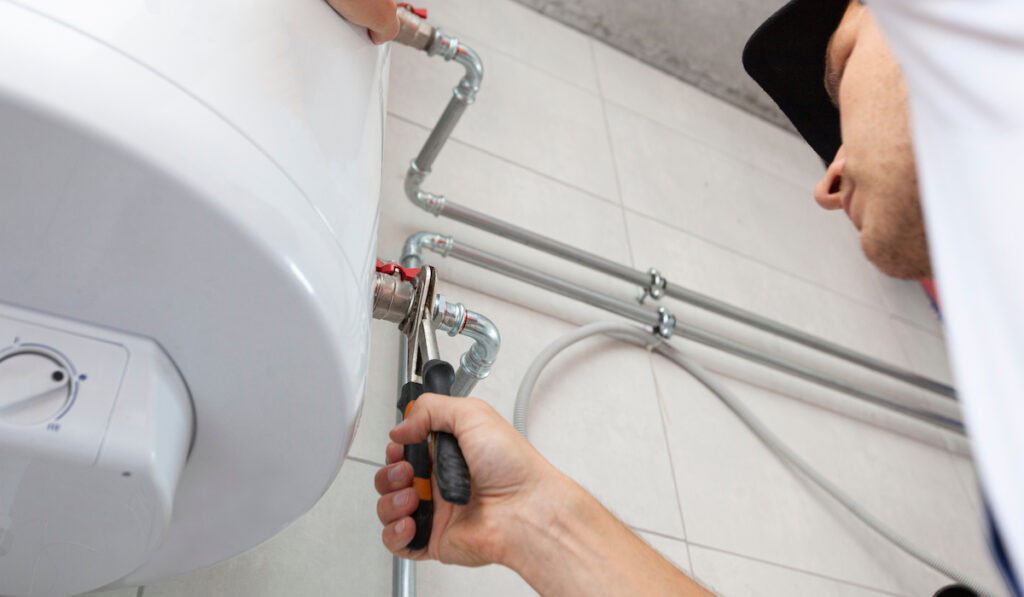Effective Techniques for Caring for Your Home's Hot Water SystemEasy Ways to Maintain Your Home's Hot Water System Properly
Effective Techniques for Caring for Your Home's Hot Water SystemEasy Ways to Maintain Your Home's Hot Water System Properly
Blog Article
The writer is making a few great pointers relating to Tips For Maintaining Your Hot Water Heater overall in the content below.

Warm water is necessary for daily comfort, whether it's for a revitalizing shower or washing recipes. To ensure your warm water system runs efficiently and lasts much longer, routine maintenance is crucial. This article supplies practical ideas and insights on just how to preserve your home's warm water system to prevent disturbances and expensive fixings.
Introduction
Keeping your home's hot water system could seem overwhelming, however with a couple of simple steps, you can guarantee it operates efficiently for years ahead. This guide covers every little thing from understanding your warm water system to DIY upkeep tips and understanding when to call in professional assistance.
Relevance of Maintaining Your Warm Water System
Regular upkeep not only prolongs the life-span of your hot water system yet additionally ensures it operates successfully. Overlooking maintenance can bring about decreased effectiveness, greater energy expenses, and also premature failure of the system.
Indications Your Warm Water System Needs Maintenance
Knowing when your hot water system requires focus can avoid significant concerns. Look out for signs such as inconsistent water temperature, unusual noises from the heating unit, or rustic water.
Comprehending Your Warm Water System
Prior to diving right into upkeep jobs, it's handy to recognize the standard parts of your warm water system. Commonly, this consists of the hot water heater itself, pipelines, anode poles, and temperature level controls.
Monthly Upkeep Tasks
Normal monthly checks can aid capture small issues prior to they rise.
Purging the Hot Water Heater
Flushing your hot water heater removes sediment build-up, boosting efficiency and prolonging its life.
Checking and Replacing Anode Rods
Anode poles stop deterioration inside the container. Inspecting and replacing them when worn out is crucial.
Inspecting and Adjusting Temperature Settings
Changing the temperature settings makes sure ideal efficiency and safety and security.
Do It Yourself Tips for Upkeep
You can execute numerous upkeep jobs on your own to maintain your warm water system in leading problem.
Looking for Leakages
On a regular basis check pipelines and links for leaks, as these can result in water damage and higher bills.
Evaluating Pressure Relief Valves
Testing the stress safety valve guarantees it works appropriately and protects against too much stress accumulation.
Protecting Pipes
Insulating hot water pipes lowers warmth loss and can conserve power.
When to Call an Expert
While DIY maintenance is beneficial, some concerns call for expert know-how.
Complicated Issues Requiring Specialist Assistance
Examples include significant leakages, electrical troubles, or if your hot water heater is regularly underperforming.
Routine Specialist Upkeep Advantages
Professional upkeep can consist of extensive evaluations, tune-ups, and ensuring compliance with safety criteria.
Final thought
Routine maintenance of your home's warm water system is vital for efficiency, long life, and expense savings. By adhering to these suggestions and knowing when to look for expert help, you can make sure a reputable supply of hot water without unanticipated interruptions.
How to Maintain an Instant Hot Water Heater
Before tinkering with your hot water heater, make sure that it’s not powered on. You also have to turn off the main circuit breaker and shut off the main gas line to prevent accidents. Also turn off the water valves connected to your unit to prevent water from flowing into and out of the appliance. 2. When you’re done, you have to detach the purge valves’ caps. These look like the letter “T” and are situated on either side of the water valves. Doing so will release any pressure that has accumulated inside the valves while at the same time avoid hot water from shooting out and burning your skin. 3. When the purge valves’ caps are removed, you have to connect your hosing lines to the valves. Your unit should have come with three hoses but if it didn’t, you can purchase these things from any hardware or home repair shops. You can also get them from retail stores that sell water heating systems. Read the user’s manual and follow it to complete this task properly. When the hosing lines are connected, open the purge port’s valves. 4. You should never use harsh chemical cleaners or solutions when cleaning your unit. Make use of white vinegar instead. It should be undiluted and you’ll probably use about 2 gallons. 5. Now flush your water heater. This task should probably take about 40 minutes. We can’t give you specific directions for this because the procedure is carried out depending on the type, model and brand of your heater. With that being said, refer to the user’s manual. 6. When you’re done draining the unit, you have to turn off the purge port valves again. Remove the hosing lines that you earlier installed on each of the water valves. Put the valve caps (purge port) back in their respective places and be very careful so as not to damage the rubber discs that are found inside these caps. 7. Now that everything’s back in place, check your user’s manual again to find out how to reactivate your water heating system. 8. Once it is working, turn one of your hot water faucets on just to let air pass through the heater’s water supply pipes. Leave the tap on until water flows smoothly out of it. https://www.orrplumbing.com/blog/2014/september/how-to-maintain-an-instant-hot-water-heater/

As a keen reader about Water Heater Maintenance Tips You Can't Afford to Forget, I thought sharing that excerpt was a smart idea. Those who enjoyed our page kindly do not forget to share it. Thanks so much for your time spent reading it.
Book Today! Report this page